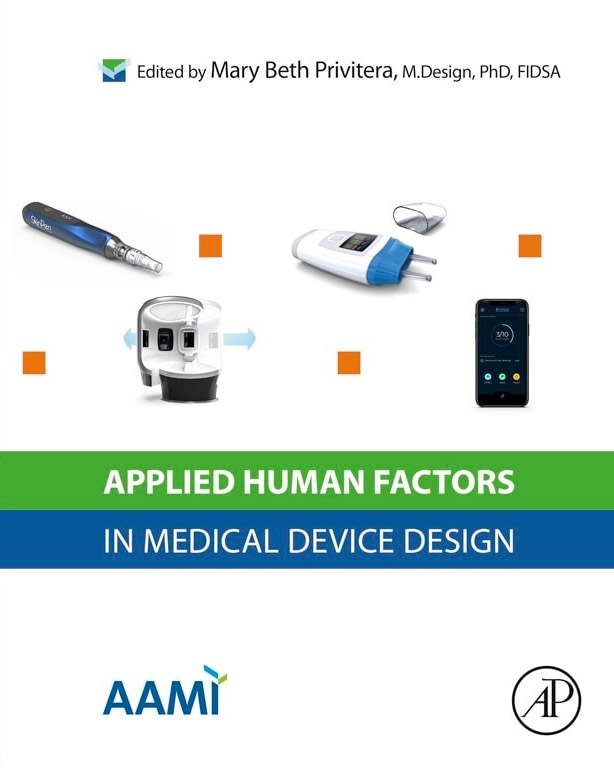Endoscope Reprocessing and Human Factors

The sink is too low. The floor mats do little to help with aching feet.
There’s a backlog of flexible endoscopes waiting to be washed for busy doctors ready to move on to their next case.
In a hospital with barely enough scopes to meet the regular demand, the pressure mounts daily for the technicians in the cramped reprocessing room.
Torquing the wrists to adequately brush the channels of a scope underwater, thoughts start to creep in — is it really necessary to go to another sink to rinse the scope when the brushing is done? All the water goes down the drain, doesn’t it?
For a tired technician, tasked with cleaning dozens of endoscopes every day, skipping steps during busy times — such as switching sinks between washing and rinsing — can be tempting.
After all, reprocessing flexible endoscopes is an arduous process of 100 or more individual steps. These steps must be strictly adhered to, manufacturers and regulatory bodies maintain, to ensure the delicate medical devices are adequately cleaned and disinfected between uses.
At the same time, reprocessing protocols have come under increased scrutiny in recent years as reported instances of device-related infections have hit the press.
As long as flexible endoscopes require reprocessing, there will be risk for human error. From improving working conditions in hospitals and clinics to providing more extensive training for endoscope technicians, ensuring patient safety requires a comprehensive approach to reprocessing endoscopes — not just to minimize the chances for vital errors that can harm patients but also to prevent damage to the financial bottom line.
Prone to Human Error
The most important room in the endoscopy unit, many clinicians will tell you, is the room where the endoscopes are cleaned. Understanding the pressures and addressing the needs of those technicians helps reduce turnover and burnout rates for those doing such important work.
That work is incredibly complex. Every type of endoscope has a different set of reprocessing instructions and those instructions can vary further depending on the manufacturer of the endoscope. Reprocessing for all flexible endoscopes requires a series of sequential subtasks under the main categories of (1) precleaning at the point of use, (2) leak testing, (3) manual cleaning, (4) rinse after cleaning, (5) visual inspection, (6) high-level disinfection (or sterilization), (7) rinse after high-level disinfection, (8) drying, and (9) storage.
 The U.S. Food and Drug Administration categorizes flexible endoscopes as semi-critical devices, or “devices that contact intact mucous membranes or non-intact skin. They do not ordinarily penetrate tissues or otherwise enter normally sterile areas of the body.” These medical devices, then, must undergo at least high-level disinfection during reprocessing.
The U.S. Food and Drug Administration categorizes flexible endoscopes as semi-critical devices, or “devices that contact intact mucous membranes or non-intact skin. They do not ordinarily penetrate tissues or otherwise enter normally sterile areas of the body.” These medical devices, then, must undergo at least high-level disinfection during reprocessing.
Reprocessing, by its complex nature, is prone to human error. More complex flexible endoscopes, such as duodenoscopes, have multiple channels and a fixed endcap with an elevator mechanism. These endoscopes, also known as ERCP endoscopes, are particularly challenging to reprocess because of their design complexity and the chances that contaminants will be lodged in the elevator mechanism. The reprocessing methods for these endoscopes have come under increased scrutiny in recent years as several outbreaks have been linked back to inadequate reprocessing.
GI technicians may be responsible for reprocessing ERCP scopes as well as a wide variety of other gastroenterology endoscopes, including colonoscopes and esophagogastroduodenoscopy endoscopes. In larger hospitals, GI technicians may be tasked with reprocessing up to 30 flexible endoscopes in a shift, “in a reprocessing area that is often smaller than a child’s bedroom.”
The complicated series of tasks and subtasks in reprocessing are meant to remove contaminants, particularly biofilm, from endoscopes prior to reuse. Biofilm, once formed, is incredibly hard to remove from a flexible endoscope. Biofilm can also act as a shield for bacteria against chemical disinfectants, which is why immediate bedside cleaning is so crucial to reprocessing success. High-level disinfection will not adequately remove contaminants without proper bedside and manual cleaning.
Aside from the risks already mentioned, rinse water may be contaminated, or an automated endoscope reprocessor (AER) used for high-level disinfection may be broken or contaminated and not disinfect an endoscope properly. There are even ongoing debates about how long a flexible endoscope can be stored — if stored properly — before it would need to undergo reprocessing again.
To further underscore the potential for human error in reprocessing, even automating parts of the process carries risks. A 2011 survey of reprocessing technicians found that inexperienced technicians may not know how to correctly hook up an endoscope to an AER and fail to adequately disinfect the endoscope.
Device Design Challenges
 All this potential for error can be compounded by working conditions, the pressure to deliver endoscopes back to exam rooms quickly, and a lack of comprehensive training for technicians.
All this potential for error can be compounded by working conditions, the pressure to deliver endoscopes back to exam rooms quickly, and a lack of comprehensive training for technicians.
In the 2019 book, Applied Human Factors in Medical Device Design, authors Emily A. Hildebrand, L. Bryant Foster, and Russell J. Branaghan delve into the challenges of reprocessing flexible endoscopes in particular. In Chapter 19 they note:
Reviews of existing literature on the causes of reprocessing errors usually place the blame on the human operator or “user” error. These analyses rarely take into account the interaction between the user and the device design, nor do they address the instructions-for-use (IFU), training, or environment… Human factors practitioners, on the other hand, know that assigning blame to the user does nothing to mitigate problems.
Turnover can be high in reprocessing suites. For many, a technician job is a steppingstone to nursing or another medical career. Others leave because of the mental pressures of the job. Others find the pace too grueling.
Whether technicians find themselves reprocessing an endoscope from start to finish or are only handling a part of the process, the work is manual and has been shown in some cases to lead to health problems.
Reprocessing technicians have reported suffering from respiratory ailments related to the odors in the reprocessing suite. They’ve also experienced physical discomfort in the back, neck, hips, legs, feet, hands or arms, according to a 2010 observational study, “Endoscope Reprocessing Methods: A Prospective Study on the Impact of Human Factors and Automation.”
The study, conducted by Cori L. Ofstead, Harry P. Wetzler, Alycea K. Snyder, and Rebecca A. Horton, included interviews, surveys and direct observation of five reprocessing sites across the U.S.
“At baseline, nearly one-third of employees with occupational health problems believed the symptoms interfered with their ability to function inside and outside of work,” the authors concluded. “Employees reported missing work because of these health problems.”
Some managers reported adjusting work schedules and sending employees to physical therapy to address the physical challenges faced by their staffers. Others reported adding floor cushions and placing sinks at appropriate heights to accommodate technicians, according to the study.
Ofstead and her co-authors concluded in their study that human-caused nonadherence to reprocessing guidelines, particularly for GI endoscopes, results from the challenging work conditions in reprocessing suites. Throughout the observation period, the authors found only one of 69 endoscopes had been reprocessed correctly using manual methods.
Duodenscopes are considered among the most complex to clean, mostly because of their connection to superbug outbreaks. These endoscopes also require the greatest number of steps in reprocessing because of the elevator mechanism.
Duodenoscope reprocessing has come under increased scrutiny in the last decade as several outbreaks have been traced back to inadequate reprocessing. Postmarket surveillance studies of the leading duodenoscope manufacturers have shown as recently as 2019 that high-concern organisms can survive reprocessing on ERCP endoscopes, including E. coli and Pseudomonas aeruginosa.
The FDA has recommended that physicians that perform ERCP procedures transition away from fixed endcap duodenoscopes and move to using duodenoscopes with disposable components.
The fixed endcaps (rubber or plastic) that are glued to the metal edges around the distal ends of duodenoscopes limit the ability to clean the crevices at the distal end. Their main purpose is to prevent tissue injury from the metal, but they negatively impact reprocessing.
A High-Pressure Job
Ofstead and her fellow researchers found that 75 percent of the participants reported feeling pressure to reprocess endoscopes quickly, underscoring concerns that expectations to quickly reprocess scopes so they can move back into the rotation can result in rushing through certain steps.
Unfortunately, due to the time reprocessing takes, a lack of available endoscopes can cause procedural delays. Delaying procedures, in turn, can cause patient dissatisfaction and have financial implications on the hospital or clinic. These factors can then trickle down and contribute to a stressful work environment for reprocessing technicians, according to the study.
As Hildebrand and other researchers noted in the 2019 book, Applied Human Factors in Medical Device Design, while in-service training by manufacturers is common practice for hospitals and clinics, it’s unusual for all technicians to be present for these tutorials. This leaves room for inconsistencies as technicians are left to train each other. Hildebrand and her colleagues argue against apprentice-style training programs for reprocessing and insist that manufacturers should be the sole trainers for technicians.
Keeping up with training new technicians, however, can be particularly challenging in units with high turnover.
In addition, the authors suggest that relying on instructions for use (IFU) and visual aids is inadequate for technicians. In a case study cited in the book, novice reprocessing technicians were asked to reprocess endoscopes only using the IFUs and visual aids in the reprocessing suite.
“The results showed that none of the participants were able to reprocess the endoscope without error,” the authors wrote. “Instructions should not be considered a primary means of mitigating potential harm as even the best designed instructions are unlikely to be used at the point of reprocessing,” they concluded.
Hildebrand has also conducted more focused research to analyze the effectiveness of visual aids in reprocessing suites. A 2013 study with Jonathan Jolly, “Better Instructions for Use to Improve Reusable Medical Equipment (RME) Sterility,” found that posters designed with large, colored arrows to illustrate steps helped newcomers reprocess clean endoscopes effectively.
Such large posters, however, aren’t always practical in what is usually a small, cramped room used for reprocessing endoscopes. In addition, it is likely that more experienced technicians would ignore them, Hildebrand and Jolly concluded.
As long as flexible endoscopes are reused, there will be risk of cross-contamination between cases, as research has shown that even perfect adherence to reprocessing protocol does not guarantee sterility.
Given all the factors that compound the risk of human error in reprocessing, perfect adherence to reprocessing protocol is no easy feat. The solution must be comprehensive and address all human factors that may contribute to failed reprocessing. Experts recommend enhanced training programs, routine monitoring of reprocessing practices, regular audits, and management addressing the time pressures and health problems experienced by employees.
Another solution? Single-use flexible endoscopes, which eliminate the need for reprocessing as well as additional costs for repairs and maintenance. Healthcare providers deserve a flexible endoscopy solution that is 100 percent sterile — and this has never been more important than right now, as health systems and regulators heighten their focus on infection control and patient safety.

